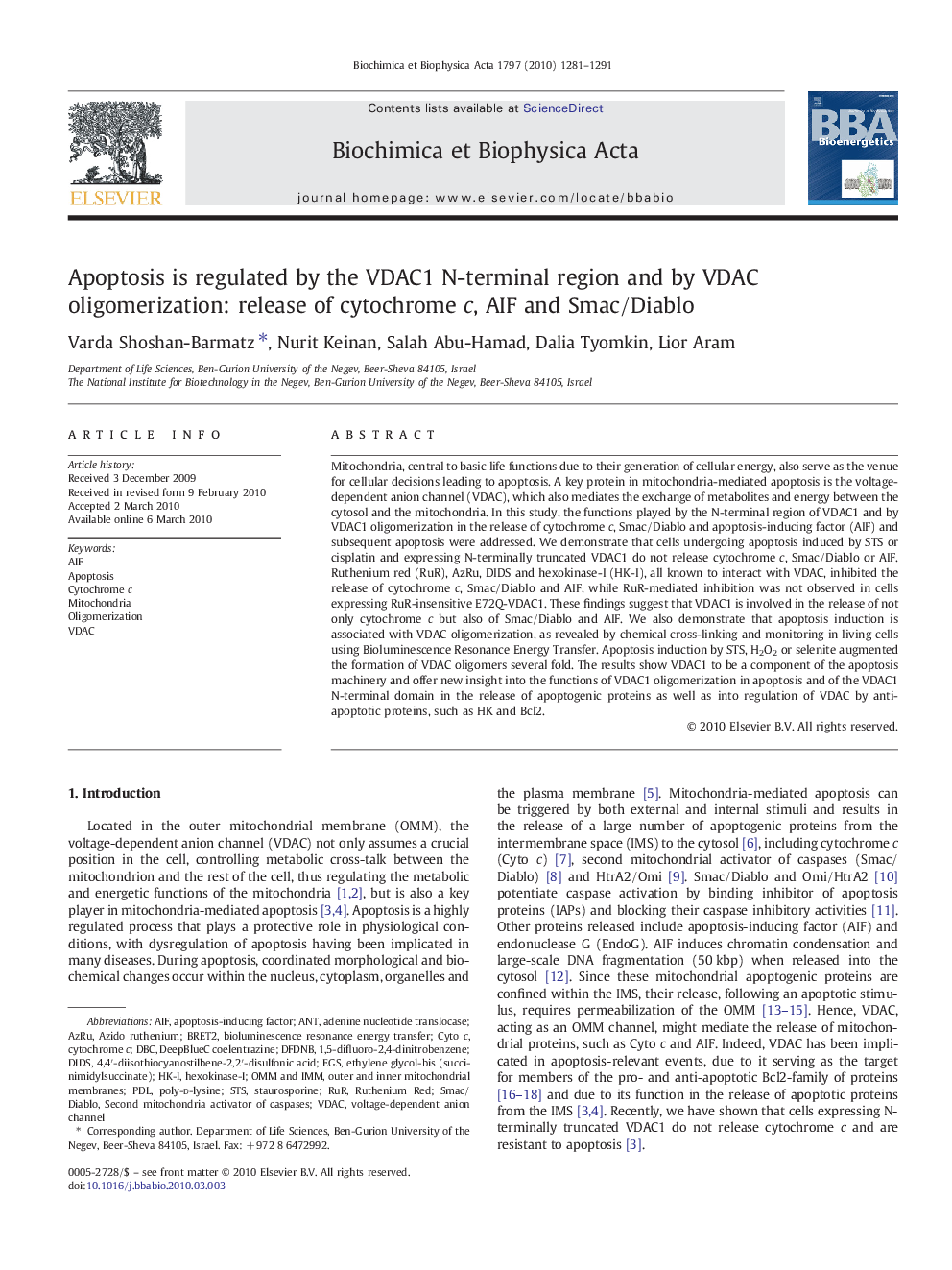| Article ID | Journal | Published Year | Pages | File Type |
|---|---|---|---|---|
| 8299029 | Biochimica et Biophysica Acta (BBA) - Bioenergetics | 2010 | 11 Pages |
Abstract
Mitochondria, central to basic life functions due to their generation of cellular energy, also serve as the venue for cellular decisions leading to apoptosis. A key protein in mitochondria-mediated apoptosis is the voltage-dependent anion channel (VDAC), which also mediates the exchange of metabolites and energy between the cytosol and the mitochondria. In this study, the functions played by the N-terminal region of VDAC1 and by VDAC1 oligomerization in the release of cytochrome c, Smac/Diablo and apoptosis-inducing factor (AIF) and subsequent apoptosis were addressed. We demonstrate that cells undergoing apoptosis induced by STS or cisplatin and expressing N-terminally truncated VDAC1 do not release cytochrome c, Smac/Diablo or AIF. Ruthenium red (RuR), AzRu, DIDS and hexokinase-I (HK-I), all known to interact with VDAC, inhibited the release of cytochrome c, Smac/Diablo and AIF, while RuR-mediated inhibition was not observed in cells expressing RuR-insensitive E72Q-VDAC1. These findings suggest that VDAC1 is involved in the release of not only cytochrome c but also of Smac/Diablo and AIF. We also demonstrate that apoptosis induction is associated with VDAC oligomerization, as revealed by chemical cross-linking and monitoring in living cells using Bioluminescence Resonance Energy Transfer. Apoptosis induction by STS, H2O2 or selenite augmented the formation of VDAC oligomers several fold. The results show VDAC1 to be a component of the apoptosis machinery and offer new insight into the functions of VDAC1 oligomerization in apoptosis and of the VDAC1 N-terminal domain in the release of apoptogenic proteins as well as into regulation of VDAC by anti-apoptotic proteins, such as HK and Bcl2.
Keywords
Related Topics
Life Sciences
Agricultural and Biological Sciences
Plant Science
Authors
Varda Shoshan-Barmatz, Nurit Keinan, Salah Abu-Hamad, Dalia Tyomkin, Lior Aram,
